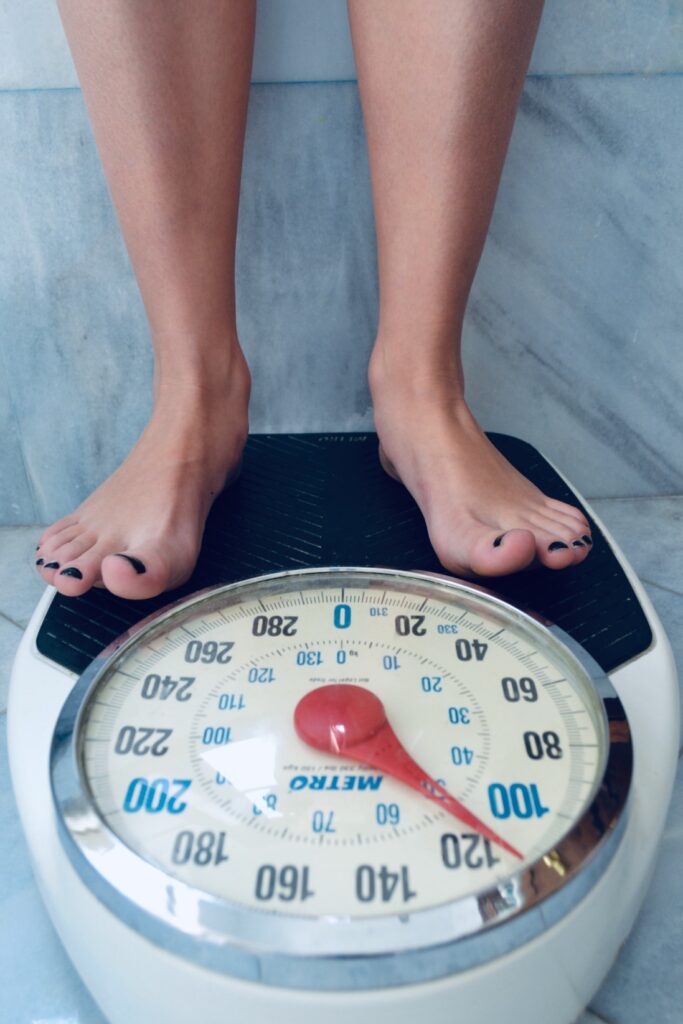Did you ever wonder what happens to the fat when you lose weight?
If you were to stop eating for a few months (disclaimer: I do not recommend this) you would lose, as a rough estimate, around ¾ of a pound of weight per day. What happens to this weight?
The rate of weight loss would likely be faster than this for the initial few days, as carbohydrate stored in the form of glycogen is depleted. The body only stores a few days worth of storage carbohydrate, whereas most people have enough fat stores to last for months.
In fact, this is one of the allures of low carbohydrate diets such as Atkins and the Ketogenic Diet, which both involve consuming very little carbohydrates. When you don’t consume carbohydrates, you quickly use up your glycogen reserves. Since glycogen is stored along with water, this also involves a lot of water loss. The net result can be pretty rapid weight loss over the initial few days.
But back to the actual question, where does the weight go when you lose fat?
This is the type of weight we want to lose on a weight loss diet. Most people are not looking to lose weight by reducing muscle mass. BUT when you lose this fat, where does it go?
A surprising amount of people including health professionals don’t know the answer to this question. Some will say you sweat it out or pee it out and many will say that you burn it as energy. The “burn it as energy” answer is popular and is on the right track. The question still remains, what happens to the fat when it gets burned? Where does it actually go?
School Biology Class
To answer the question lets take a quick trip back to school biology class.
The energy that is contained in food comes from the sun. Plants have the ability to use the sun’s energy to combine carbon dioxide and water to make glucose.
Chemical Equation for Photosynthesis:
6CO2 (Carbon Dioxide) + 6H2O (Water) –> C6H12O6 (glucose) + H2O (Water)
Glucose can then be converted by the plant to other calorie containing substances such as starch, fats and proteins. Making proteins (or amino acids) also involves trapping nitrogen from the soil, but this is another topic altogether.
The photosynthesis reaction is a clue to where the weight goes when we lose weight since the inputs in photosynthesis are the outputs in burning fat as energy.
Both carbohydrates and fats are made up of the elements carbon, hydrogen and oxygen. When combined with the oxygen we breathe, the body can create a chemical reaction to release the energy contained in the fat.
So Where Does the Weight Actually Go?
The resulting outputs from burning fat are……..drumroll please………water and carbon dioxide.
This equation is shown below, where you can see the outputs from burning a triglyceride (compound of fat stored in the body) are carbon dioxide (CO2), water (H2O) and energy.
As a side point, this energy is used to create ATP, which is ultimately our body’s energy currency.
If you work out the percentage of the stored fat that is converted to carbon dioxide when burnt, it works out at around 70% of the weight, with the remaining 30% being converted to water.
Chemical Equation for burning a molecule of triglyceride (fat):
C55H104O6 + 78O2 –> 55CO2+52H2O + energy
In Conclusion
So there you have it. When you lose fat, most of the weight is lost by being breathed out as carbon dioxide.
I for one take some comfort by knowing that every breath I take on the treadmill, is breathing out a tiny bit of body fat into the atmosphere. (although when we are exercising we tend to be burning a mix of carbs and fat)
It can however be a slightly depressing read to see how long you need to exercise for at various intensities to burn off the calories in a croissant. So while exercise can be a great tool for weight loss, the most important factor to successful weight loss may be the calories consumed on a day to day basis.
